Rumbles on Mars Raise Hopes of Underground Magma Flows
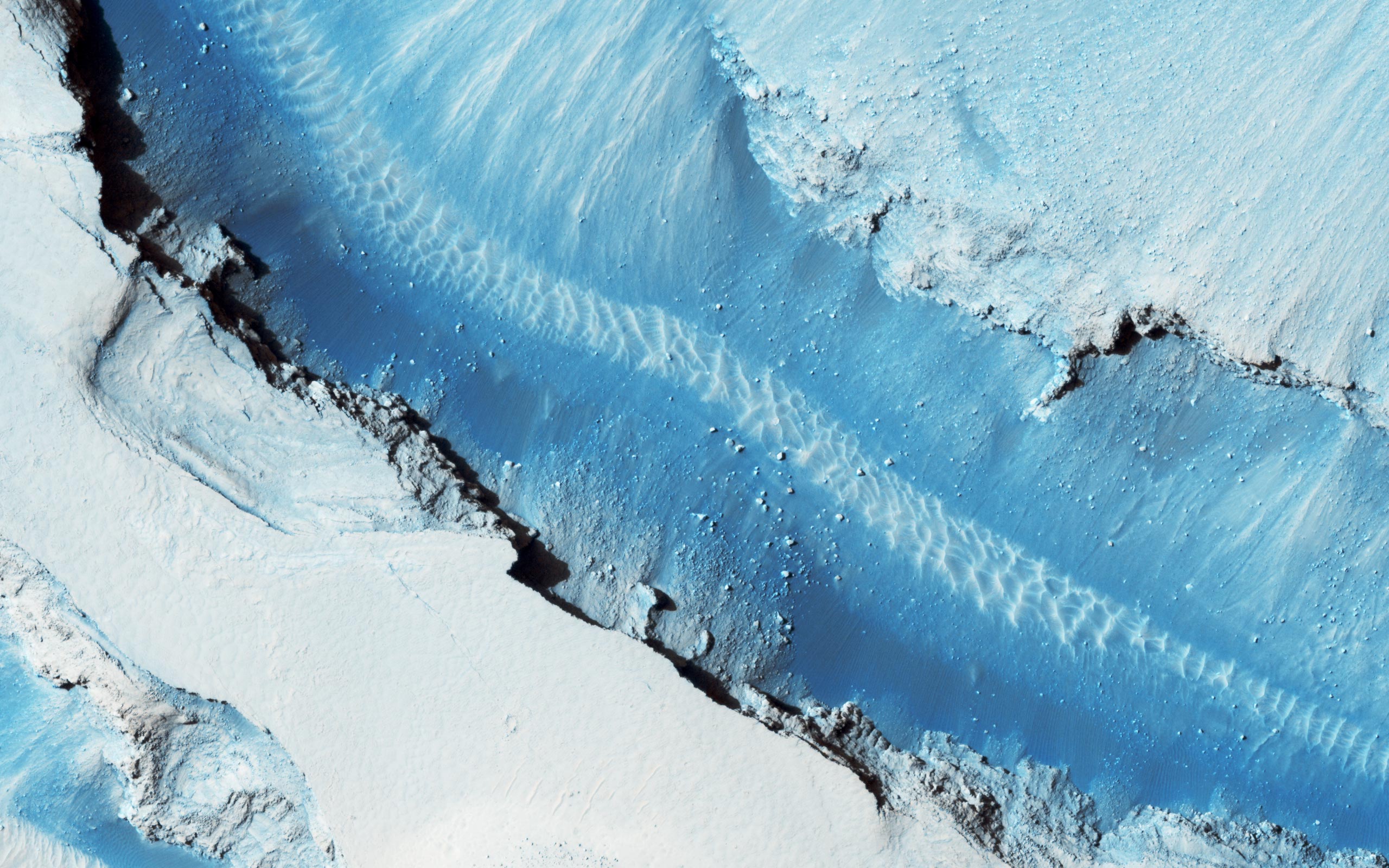
Cerberus Fossae, a region of Mars marked by fault lines, is among the youngest parts of the planet. Recent findings have raised the possibility that it could still be geologically active today.
NASA/JPL-Caltech/University of Arizona
Introduction
Once upon a time, Mars was a world of cataclysms. Its namesake, the Roman war god, would likely have been pleased to see it in action: Volcanic cathedrals of flame unleashed armies of molten rock that obliterated the surface of the planet.
Today, its volcanoes are quiet. The lack of evidence for any lava has led scientists to assume that its volcanic activity expired long ago. We imagine Mars to be less like the war god, and more like one of his vanquished foes — cold, still and lifeless.
But the assumption that Mars is inert is starting to look dead wrong.
A recent flurry of results from orbiting spacecraft have found that its ancient lava flows are not so ancient after all. Some of them appear to have erupted from volcanic pits or chasms within the last few million years, perhaps even within the last few tens of thousands of years.
And NASA’s InSight lander, which has been peeking inside Mars for two years now, has picked up on some curious seismic signals emanating from one such site of youthful volcanism. The results, which were presented at a conference in December, are not definitive. But they suggest that InSight could be hearing the sounds of convulsing magma — the drumbeat of volcanic warfare presumed to have fallen silent eons ago.
“It is a very exciting finding and, if confirmed, suggests that Mars could enter the pantheon of currently volcanically active worlds within our solar system,” said Christopher Hamilton, a planetary scientist at the University of Arizona.
If future data and analyses establish that magma does exist, that would be a revolutionary reveal. It would be solid evidence in support of a suspicion that scientists have harbored for some time now: Rocky worlds that look volcanically dead aren’t, said Paul Byrne, a planetary scientist at North Carolina State University. They are alive — or, to put it another way, “these worlds are just dying very slowly.”
We have almost no certain knowledge about the inside of worlds, including our own. That’s a problem. “With few exceptions, the thermal evolution of a planet governs everything,” said Byrne, from the state of the surface, on which biology can take hold, to the evolution of the world’s atmosphere. “It’s one story — it’s the planet cooling down. It’s the only thing that matters.”
Volcanism is the outward expression of a planet’s internal fire, a major way for it to lose heat while giving the surface a new coat of paint. If we understand how volcanic Mars is, how capable it is of making eruptible magma, we can understand its internal evolution and compare it to Earth’s. So if it really is magma that InSight is hearing, then we come closer to understanding not only Mars, but our own planet as well.
The New Rifts
Covered in impressive magmatic mountains and epic lava flows, Mars is unquestionably a volcanic world. In the earlier chapters of its 4.5-billion-year history, it built the largest volcanoes in the solar system. Olympus Mons, the most famous, is ludicrously enormous: It’s almost three times higher than Everest, and if you plopped it on top of New York City, its edges would stretch nearly from Boston to Washington, D.C. Because it effectively squashes the crust under its weight, it is surrounded by a self-made moat that was once filled with lava. If you stood at its base, you wouldn’t be able to see the peak, because it would sit beyond the horizon.
That phase of colossus creation appears to have ended long ago. And for a long time, researchers presumed that all traces of volcanic activity ended hundreds of millions of years in the past, if not billions. That assumption was based on several generalizations about the inner solar system’s evolution.
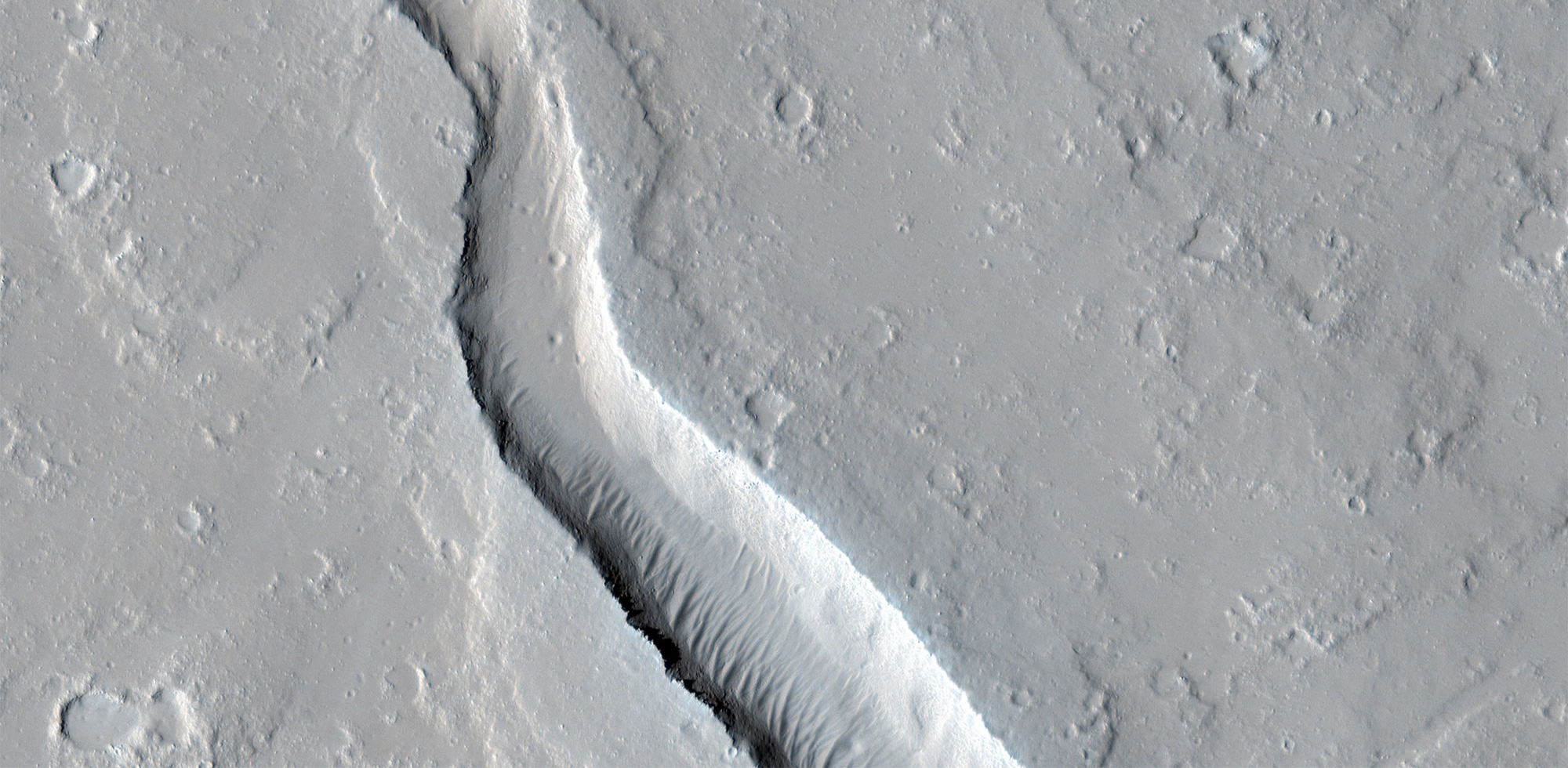
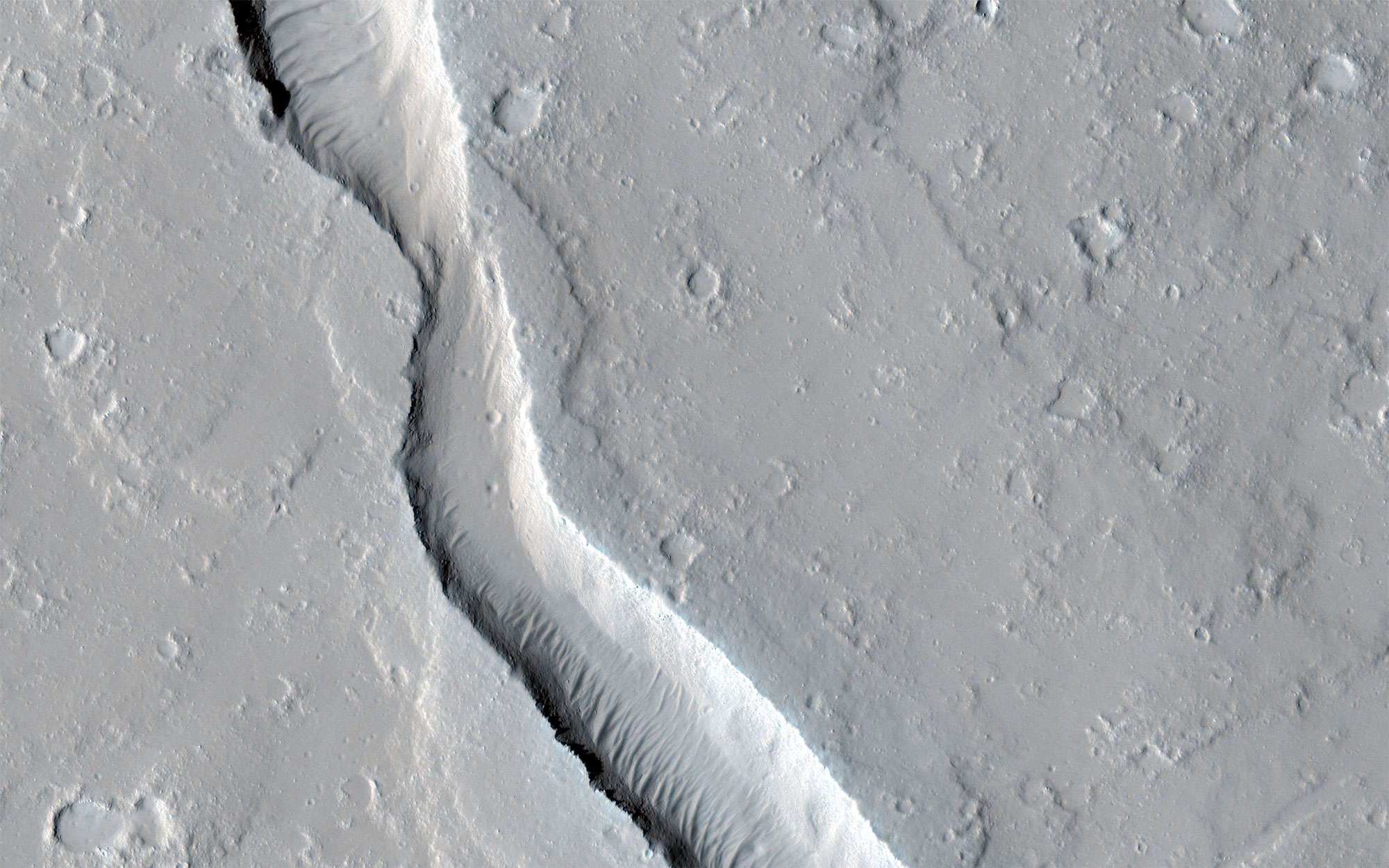
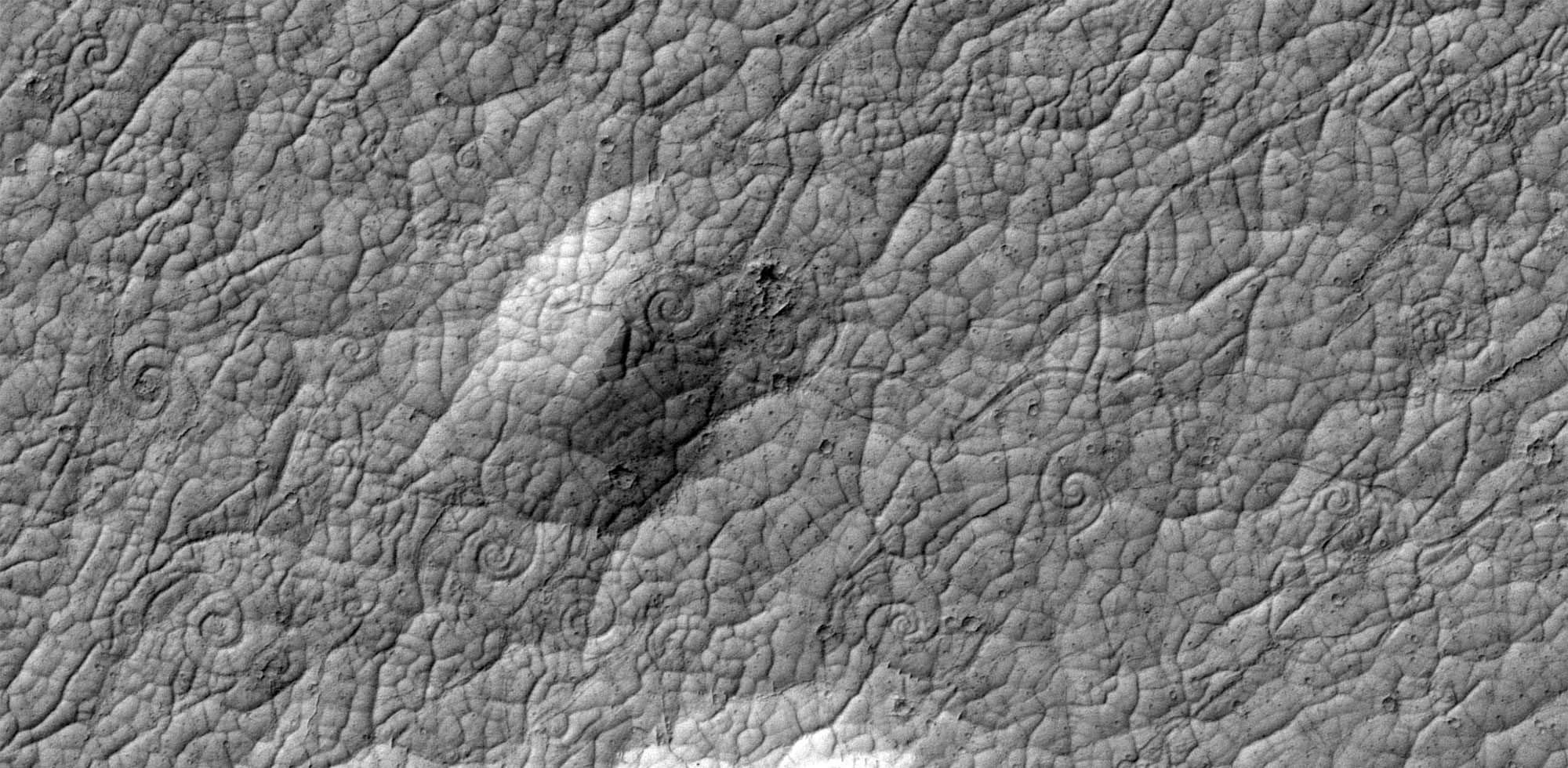
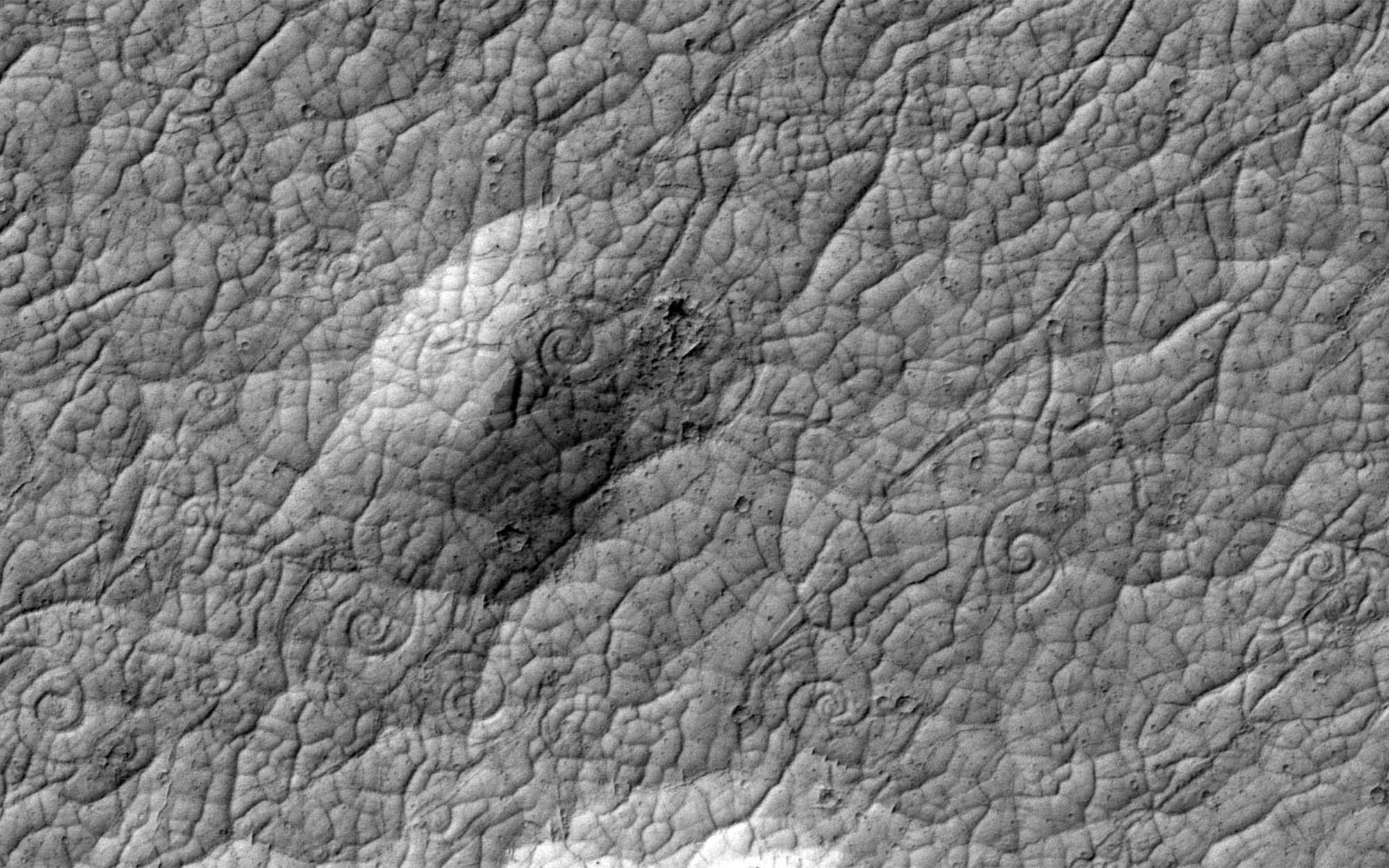
Mars was unquestionably once volcanically active. Orbiting spacecraft have found records of lava flow at the base of Olympus Mons (left), as well as the spiral patterns left by ancient flows.
NASA/JPL-Caltech/University of Arizona
Take the five rocky worlds of the inner solar system. Venus and Earth are about the same size. Mars, Mercury and the moon are smaller. (Phobos and Deimos, Mars’ two potato-shaped moons, are orders of magnitude smaller than Earth’s moon.)
Like people and books, said Tracy Gregg, an expert on planetary volcanology at the University at Buffalo, when it comes to powering a planet’s volcanoes, “what matters is on the inside.” Eons ago, these five worlds had two bountiful sources of fire in their hearts: primordial heat left over from their violent formation, and heat produced by radioactive decay. The heat eventually escaped through radiation and volcanic eruptions.
Vigorous volcanic eruptions cool planets down. But larger worlds, like Earth and Venus, take longer to release their internal heat, allowing them to remain volcanically active for longer. On average, Earth has 40 known volcanoes erupting at any given moment. We can’t see through Venus’ thick clouds, but thanks to a vast amount of circumstantial evidence scientists think it’s almost certainly still erupting.
Smaller worlds seem to lose their fuel faster. In the four centuries since humans first pointed their telescopes at Mars, no eruption has been seen, leading to the assumption that it’s volcanically dead.
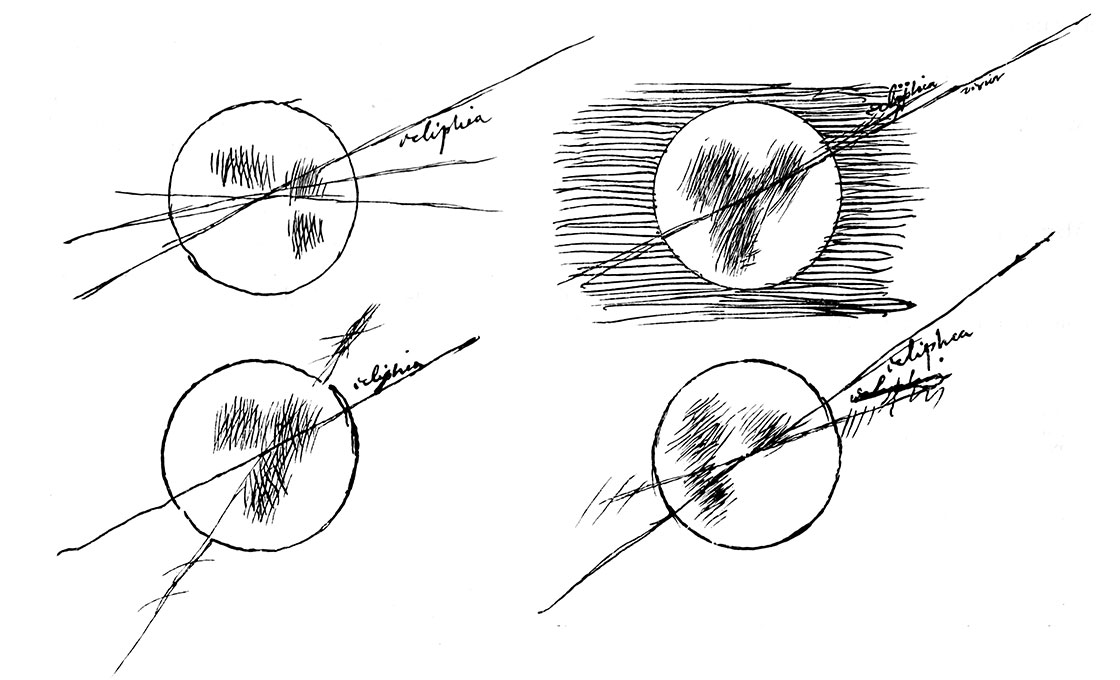
In 1659, the Dutch astronomer Christiaan Huygens made the first drawings of the surface of Mars, using a telescope of his own design.
Christiaan Huygens, Oeuvres complètes
But the estimates of when, exactly, Mars went dark have shifted in recent years. One 2017 study found that lava flows in the cauldron atop Arsia Mons, another gigantic volcano, could have appeared as recently as 50 million years ago, long after the Tyrannosaurus rex died out on Earth.
And then there’s Cerberus Fossae.
In 2019, several seismic events, or “marsquakes,” were tracked back to Cerberus Fossae (“rifts of Cerberus,” the terrifying three-headed hound that guards the entrance to Hades in Greek mythology). Covered in crevasses hundreds of miles long, this place became the first active fault zone found on Mars. And it’s a seriously strange part of the planet.
The best way to estimate the age of a planet’s surface is to analyze its rocks, using the radioactive decay of its elements as a geologic clock. But for the time being, the only Martian rocks we have on Earth arrived in the form of meteors, and any meteor could have come from anywhere on Mars’ surface. So researchers have to rely on crater counting.
Crudely put, if there are no major erosional processes operating on a planet like Mars, then older surfaces should have more impact craters from asteroid hits. Crater counting cannot give scientists an absolute age, but it gives a relative age.
Cerberus Fossae is notably lacking in craters. “It’s definitely amongst the youngest surfaces on the planet,” Gregg said.
Early orbital reconnaissance of Cerberus Fossae suggested that some sort of fluid washed over the area not too long ago in geologic terms. For a while, scientists couldn’t tell if it was water or lava. But after analyzing images taken by higher-resolution cameras in the past two decades, “we were able to determine that both of those things came out of Cerberus at different times,” Gregg said.
One of these apparent outpourings of lava, the Athabasca Valles flood lava, erupted less than 20 million years ago, said Hamilton. A torrent of lava, erupting in just a few weeks, would have covered an area exceeding that of the United Kingdom.
A paper Hamilton co-authored, currently undergoing revisions for publication in the journal Icarus, looked at a smaller volcanic deposit at Cerberus Fossae. This deposit may have resulted from an explosive eruption that blanketed the area in ash. Careful crater counting suggests it could be as old as 1 million years, or as youthful as 53,000 years — yesterday, in planetary terms.
David Horvath, a researcher at the Planetary Science Institute in Tucson, Arizona, and the paper’s lead author, said that the community has long suspected Cerberus Fossae of being a place of exceedingly young volcanism. “We’re just kind of stacking on evidence to back that up,” he said.
But the increasingly youthful estimates of its volcanism raise a tantalizing question: Is Mars still volcanically active today?
Listening for Hellfire
On November 26, 2018, NASA’s InSight lander touched down on the Martian plains of Elysium Planitia, about 1,600 kilometers from Cerberus Fossae. The spacecraft’s payload — which includes a heat flow instrument, a magnetometer and a seismometer — makes it the first fully equipped interplanetary geophysicist. It takes the sum of humanity’s understanding of how to look at Earth’s viscera and applies it to another planet entirely.
Seismically speaking, Mars is quieter than Earth. But InSight’s seismometer has nevertheless picked up a cavalcade of seismic rumbles and grumbles. Some are faults slipping. But many do not yet have clear sources. And at December’s annual gathering of the American Geophysical Union, Sharon Kedar, a planetary scientist at NASA’s Jet Propulsion Laboratory, and his colleagues suggested an eye-catching possibility: Some of these low-frequency whispers may be the sounds of magma moving about deep below ground.
The presentation, which showcased preliminary results that have not yet been peer-reviewed, made no firm statements. The associated researchers declined to speak to Quanta until the paper, recently accepted for publication in the Journal of Geophysical Research, is published. But independent researchers have expressed interest in the discovery, even as they await additional data. “It’s not crazy to think it could be magma,” said Gregg.
On Earth, seismologists can pinpoint subterranean rumblings by using multiple seismometers. Just measure the exact arrival time of a seismic wave at three or more locations, and you can triangulate the source.
On Mars, there’s only one seismometer. But what a seismometer it is. “They didn’t just send any seismometer. They sent one of the most sensitive seismometers that’s ever been built,” said Christine Houser, a global seismologist at the Earth-Life Science Institute at the Tokyo Institute of Technology.
Quanta Magazine; source: NASA/JPL-Caltech
“I like to call it nanoseismology because we’re really looking at motions on the scale of an atom,” said Nicholas Schmerr, a geoscientist at the University of Maryland who works with InSight. The seismometer has even been known to pick up the faint thunder of dust devils whirling across the cold desert world.
There are two tricks that InSight’s seismometer can use to estimate a seismic wave’s source. The first is like estimating the distance to a lightning strike by timing the delayed arrival of the thunderclap. Two components of seismic waves, P and S waves, move at different speeds. The time difference between them allows scientists to work out the distance to the source.
In addition, seismic waves are polarized: They have a component that vibrates in the east-west direction, another that vibrates north and south, and a third that moves vertically. InSight measures the relative strength of each component, which can reveal which direction the wave comes from.
Kedar’s group analyzed five mysterious seismic events. Two of these featured a strong polarization signal that allowed them to be traced to Cerberus Fossae with a high degree of confidence. These two appear to be ordinary, run-of-the-mill tectonic quakes.
The other three signals were weak, so the researchers could measure only the difference in P- and S-wave arrival times. That gave the team a distance. Within this radius, Cerberus Fossae was by far the most likely place capable of producing the rumbles, but it remains possible that they come from somewhere else, said Anna Horleston, a seismologist at the University of Bristol who also works with InSight.
These three signals resemble ones on Earth that are associated with flowing fluids. Trying to model the phenomenon that created those signals, the researchers found they couldn’t rule out one particular fluid — magma — moving through a narrow channel at a depth of 60 kilometers.
Gregg described one way that moving magma makes noise. “When liquid magma’s moving through a conduit, the conduit vibrates just like when you push air through your vocal cords. Your vocal cords vibrate, and you make a sound. And just like if you’ve ever sucked on helium, that sound should be different whether it’s water or magma.”
At 60 kilometers down, any fluid would have to be magma, not water, said Hamilton. But these weak signals don’t contain enough information to provide accurate source depths, said Misha Kreslavsky, a planetary scientist at the University of California, Santa Cruz.
The signals may also not be what they appear to be. As a seismic wave oscillates through the ground, its high-frequency components lose energy faster than its low-energy components, said Jackie Caplan-Auerbach, a seismologist and volcanologist at Western Washington University. Perhaps on the trip from Cerberus Fossae to InSight, the high frequencies from ordinary signals became attenuated, making the signals look like low-frequency events, which are often associated with moving magma.
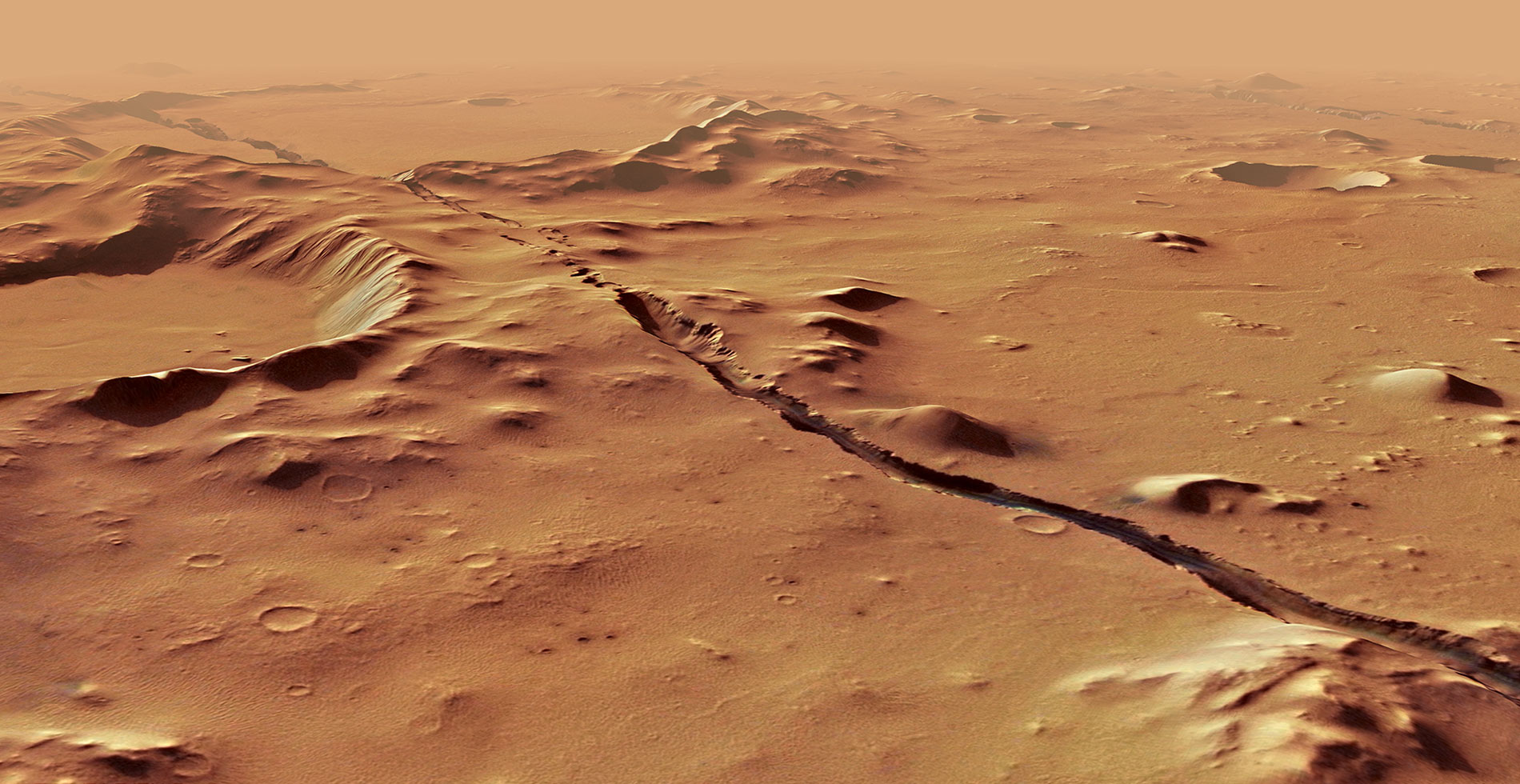
The surface fractures found at Cerberus Fossae pass through hills and craters, which implies that they must be younger than other features.
ESA
Even with all that in mind, scientists are still excited that the existence of magma cannot be ruled out. Kreslavsky said that everything presented so far is perfectly reasonable. Horleston isn’t convinced we have heard magma moving around — but, she added, that’s not to say it isn’t there. It escaped no one’s attention that these rumbles likely emanated from the youngest volcanic part of Mars, which is unlikely to be coincidental. “This is great,” said Gregg. “I mean, it makes sense, right?”
There is plenty more work to be done, and more seismic data is needed to refine this hypothesis. But the data InSight is obtaining is changing what we know about the inside of Mars. “I’m actually able to start answering some of the questions I’ve had for decades about how this planet works,” said Schmerr. Finally, the stories first sketched out in pencil many years ago can start to be written in ink.
Rethinking Mars
The recent studies of Mars have only highlighted the fact that we have a poor picture of what the insides of worlds are like. “We don’t know what the distribution of radioactive elements is in the inner solar system,” said Gregg. “We got nothing.” A cold Mars is not unreasonable, but that’s assuming it had the same amounts of radioactive elements that Earth did when it was born. “Who’s to say that’s true?”
Mars also doesn’t have a fragmented shell, like Earth; it lacks moving tectonic plates, which let heat escape into space through the cracks. Perhaps that helps keep Mars’ internal embers aglow.
Working out the volcanic viability of Mars would be easier if we could take its internal temperature. But InSight’s heat flow probe, affectionately dubbed the mole, failed to burrow deep enough to get a proper reading. InSight’s seismic data, though, suggests that things are perhaps warm enough to keep Mars volcanically alive and kicking, but in a different way from Earth.
Even if it exists, the magma beneath Cerberus Fossae may never again erupt onto the surface. Despite Mars’ impressive volcanic architecture, a lot of its magma seems to be injected into the upper crust and simply stuck there, sometimes creating enormous volcanic protuberances.
Surface eruptions are possible, though. Mars may lack the everyday surface eruptions that Earth has, but, like Earth, it clearly produces epic lava floods from time to time — it just has gaps of millions of years between each paroxysm. “I would be shocked if there was not another large surface eruption of lava on Mars within 5 to 10 million years,” said Hamilton.
It stands to reason that if Mars is volcanically active today, its smaller cousins might be too. There’s an area of the moon that looks like a bowl of mercury droplets, and this volcanic froth may be just 100 million years old. Mars is half the diameter of Earth, said Gregg, and “we can’t even say for sure that the moon, which is a quarter of the size of Earth, is dead.”
“I think the moon will erupt again at some point in the future,” said Byrne. “And I think Mercury will too — why not, right?”
These worlds may not be as quiet as we’ve been conditioned to think. Perhaps the pauses between their eruptions are simply too long for humans to have noticed — which makes our world, with its constant eruptions, a curious outlier. “In every way you think about it, Earth is the weird one,” said Gregg.
This article was reprinted on TheAtlantic.com.





